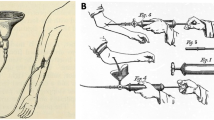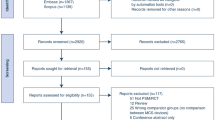Summary
Background
An important reason for production of ischemia and reperfusion injury and oxidative stress is the sudden and rapid changes in body temperature during the institution of cardiopulmonary bypass. The aim of this study was to investigate the effects of warm priming solution on oxidative stress and atrial fibrillation.
Methods
This is a preliminary prospective study on a group of 40 patients who underwent elective coronary artery bypass grafting operation using cardiopulmonary bypass. Patients were randomized into two groups, each consisting of 20 patients; one group was primed with a solution at 20 °C and the other at 36 °C initially for cardiopulmonary bypass. Blood samples from both of the groups were drawn preoperatively and at the 15th and 60th min of aortic cross clamping and 24th h following the surgery. Serum malondialdehyde levels, protein carbonyl content and total antioxidant status were detected. Patients were followed for postoperative atrial fibrillation.
Results
Malondialdehyde and protein carbonyl content were found to be significantly higher and total antioxidant status was concordantly lower in the cold priming group at the 15th and 60th min, recovering to the normal range postoperatively at the 24th h. Patients in the cold priming group had developed a significantly higher rate of atrial fibrillation when compared with the patients in the warm priming group during the postoperative period.
Conclusion
In conclusion, although this study has its limitation about the sample size it may provide an insight about the probable preventive effects of 36 °C warm priming solution in oxidative stress and postoperative atrial fibrillation.
Zusammenfassung
Grundlagen
Ein wichtiger Grund für die Entstehung einer Ischämie, eines Reperfusionsschadens und von oxidativem Stress ist die plötzliche und rasche Änderung der Körpertemperatur während der Einleitung eines kardiopulmonalen Bypasses. Ziel unserer Studie ist es, die Wirkungen von warmen vorbereitenden Lösungen auf oxidativen Stress und Vorhofflimmern zu untersuchen.
Methodik
Es handelt sich um eine präliminäre, prospektive Studie an 40 Patienten, die einer elektiven Koronararterien-Bypass-Operation mit kardiopulmonalem Bypass unterzogen wurden. Die Patienten wurden in 2 Gruppen von jeweils 20 randomisiert: die eine wurde anfangs mit einer 20 °C Lösung, die andere mit einer 36 °C Lösung für den kardiopulmonalen Bypass vorbereitet. Präoperativ und in der 15. und in der 60. Min nach der Aortenklemmung, sowie 24 h postoperativ wurden von beiden Gruppen Blutproben abgenommen. Die Serumkonzentrationen von Malondialdehyd, sowie der Karbonyl-Protein-Gehalt und der gesamte antioxidative Status wurden bestimmt. Das Auftreten von postoperativem Vorhofflimmern wurde kontrolliert.
Ergebnisse
Malondialdehyd-Konzentrationen und der Karbonyl-Protein-Gehalt waren in der 15. und 60. Min bei den Patienten mit kalter Vorbereitung signifikant höher. Zugleich war der Gesamt-antioxidative Status signifikant erniedrigt. Diese Veränderungen normalisierten sich bis zur 24 h postoperativ. Bei den Patienten mit der kalten Vorbereitung trat Vorhofflimmern in der postoperativen Phase signifikant häufiger als bei den Patienten mit der körperwarmen Vorbereitung auf.
Schlussfolgerung
Obwohl die Studie nur an relativ wenigen Patienten durchgeführt wurde, könnte sie doch einen Hinweis auf mögliche präventive Wirkungen einer 36 °C warmen vorbereitenden Lösung im Bezug auf die Entstehung von oxidativen Stress und postoperativem Vorhofflimmern geben.
Similar content being viewed by others
References
Rodrigo R. Prevention of postoperative atrial fibrillation: novel and safe strategy based on the modulation of the antioxidant system. Front Physiol. 2012;3:93.
Venardos KM, Perkins A, Headrick J, Kaye DM. Myocardial ischemia-reperfusion injury, antioxidant enzyme systems, and selenium: a review. Curr Med Chem. 2007;14:1539–49.
Gonenc A, Hacisevki A, Bakkaloglu B, Soyagir A, Torun M, Karagoz H, et al. Oxidative stress is decreased in off-pump versus on-pump coronary artery surgery. J Biochem Mol Biol. 2006;39:377–82.
Pantke U, Volk T, Schmutzler M, Kox WJ, Sitte N, Grune T. Oxidized proteins as a marker of oxidative stress during coronary heart surgery. Free Radic Biol Med. 1999;27:1080–6.
Pinzani P, Petruzzi E, Orlando C, Gallai R, Serio M, Pazzagli M. Serum antioxidant capacity in healthy and diabetic subjects as determined by enhanced chemiluminescence. J Biolumin Chemilumin. 1998;13:321–5.
Elgebaly SA, Houser SL, el Kerm AF, Doyle K, Gillies C, Dalecki K. Evidence of cardiac inflammation after open heart operations. Ann Thorac Surg. 1994;57:391–6.
Gonenc A, Hacişevki A, Griffiths HR, Torun M, Bakkaloglu B, Simsek B. Free radical reaction products and antioxidant capacity in beating heart coronary artery surgery compared to conventional bypass. Biochemistry (Mosc). 2011;76(6):677–85.
Hunter MI, Nlemadim BC, Davidson DL. Lipid peroxidation products and antioxidant proteins in plasma and cerebrospinal fluid from multiple sclerosis patients. Neurochem Res. 1985;10:1645–52.
Levine RL, Garland D, Oliver CN, Amici A, Climent I, Lenz AG, et al. Determination of carbonyl content in oxidatively modified proteins. Methods Enzymol. 1990;186:464–78.
McPherson RA. Specific proteins. In: Henry JB, editor. Clinical diagnosis and mangement by laboratory methods. 20th ed. Philadelphia: WB Saunders Company; 2001. p. 249–63.
Juránek I, Bezek S. Controversy of free radical hypothesis: reactive oxygen species—cause or consequence of tissue injury? Gen Physiol Biophys. 2005;24:263–278.
Jones WK, Brown M, Ren X, He S, McGuinness M. NF-kappaB as an integrator of diverse signaling pathways: the heart of myocardial signaling? Cardiovasc Toxicol. 2003;3(3):229–54.
Debreceni B, Debreceni L. Why do homocysteine-lowering B vitamin and antioxidant E vitamin supplementations appear to be ineffective in the prevention of cardiovascular diseases? Cardiovasc Ther. 2011;00:1–7. doi:10.1111/j.1755-5922.2011.00266.x.
Kunt AS, Selek S, Celik H, Demir D, Erel O, Andac MH. Decrease of total antioxidant capacity during coronary artey bypass surgery. Mt Sinai J Med. 2006;73:777–83.
Maisel WH, Rawn JD, Stevenson WG. Atrial fibrillation after cardiac surgery. Ann Intern Med. 2001;135:1061–73.
Elahi M, Hadjinikolaou L, Galinanes M. Incidence and clinical consequences of atrial fibrillation within 1 year of first-time isolated coronary bypass surgery. Circulation 2003;108(Suppl II):II-207–12.
Mathew JP, Fontes ML, Tudor IC, Ramsay J, Duke P, Mazer CD, Barash PG, Hsu PH, Mangano DT. A multicenter risk index for atrial fibrillation after cardiac surgery. JAMA. 2004;291:1720–9.
Zimmer J, Pezzullo J, Choucair W, Southard J, Kokkinos P, Karasik P, Greenberg MD, Singh SN. Meta-analysis of antiarrhythmic therapy in the prevention of postoperative atrial fibrillation and the effect on hospital length of stay, costs, cerebrovascular accidents, and mortality in patients undergoing cardiac surgery. Am J Cardiol. 2003;91:1137–40.
Gillespie EL, White CM, Kluger J, Sahni J, Gallagher R, Coleman CI. A hospital perspective on the cost-effectiveness of beta-blockade for prophylaxis of atrial fibrillation after cardiothoracic surgery. Clin Ther. 2005;27:1963–9.
Gillespie EL, White CM, Kluger J, Rancourt JA, Gallagher R, Coleman CI. Cost-effectiveness of amiodarone for prophylaxis of atrial fibrillation after cardiothoracic surgery. Pharmacotherapy 2006;26:499–504.
Alqahtani AA. Atrial fibrillation post cardiac surgery trends toward management. Heart Views. 2010;11:57–63.
Elahi M, Flatman S, Matata BM. Tracing the origins of postoperative atrial fibrillation: the concept of oxidative stress mediated myocardial injury phenomenon. Eur J Cardiovasc Prev Rehabil. 2008;15:735–741.
Van Wagoner DR. Oxidative stress and inflammation in atrial fibrillation: role in pathogenesis and potential as a therapeutic target. J Cardiovasc Pharmacol. 2008;52:306–13.
Neuman RB, Bloom HL, Shukrullah I, Darrow LA, Kleinbaum D, Jones DP, Dudley SC Jr. Oxidative stress markers are associated with persistent atrial fibrillation. Clin Chem. 2007;53:1652–7.
Negi S, Sovari AA, Dudley SC Jr. Atrial fibrillation: the emerging role of inflammation and oxidative stress. Cardiovasc Hematol Disord Drug Targets. 2010;10:262–8.
Van Wagoner DR. Molecular basis of atrial fibrillation: a dream or a reality? J Cardiovasc Electrophysiol. 2003;14:667–9.
Korantzopoulos P, Kolettis TM, Galaris D, Goudevenos JA. The role of oxidative stress in the pathogenesis and perpetuation of atrial fibrillation. Int J Cardiol. 2007;115:135–43.
Killig F, Stark G. Photodynamic activation of ion transport through lipid membranes and its correlation with an increased dielectric constant of the membrane. Biochim Biophys Acta. 2002;1564:207–13.
Boos CJ, Anderson RA, Lip GY. Is atrial fibrillation an inflammatory disorder? Eur Heart J. 2006;27:136–149.
Koniari I, Apostolakis E, Rogkakou C, Baikoussis NG, Dougenis D. Pharmacologic prophylaxis for atrial fibrillation following cardiac surgery: a systematic review. J Cardiothorac Surg. 2010;5:121.
Davis EM, Packard KA, Hilleman DE. Pharmacologic prophylaxis of postoperative atrial fibrillation in patients undergoing cardiac surgery: beyond beta-blockers. Pharmacotherapy. 2010;30:749.
Conflict of interest
The authors declare that there is no source of funding for the work.
Author information
Authors and Affiliations
Corresponding author
Rights and permissions
About this article
Cite this article
Buyukates, M., Acikgoz, S., Aktunc, E. et al. A preliminary study about the effects of warm priming solution on oxidative stress and postoperative atrial fibrillation in open heart surgery. Wien Klin Wochenschr 124, 618–623 (2012). https://doi.org/10.1007/s00508-012-0222-1
Received:
Accepted:
Published:
Issue Date:
DOI: https://doi.org/10.1007/s00508-012-0222-1




